Sustaining Nature and Natural Processes in Ultra-Urban Environments [LAF + DeepRoot Roundtable]
Urbanization is occurring rapidly – not just in the United States, but globally – and squeezing people, transit, and housing into denser and denser areas. This shift isn’t just about buildings and roads, of course, it also affects it affects the way we plan, integrate, and care for urban nature. Given that trees and plants are more important than ever in ultra-urban areas – and that highly developed environments are the most difficult for nature to thrive in – the stakes are being raised on urban greenery. Yet cities need nature, and nature needs cities: how and where will designers meet the challenge to bring nature to the built environment?
This was the topic of an April 16 roundtable discussion and design charrette co-hosted by DeepRoot and The Landscape Architecture Foundation at the SvR offices in Seattle. The event was attended by about 20 people across various fields, including landscape architecture, planning, engineering, arboriculture, and more. By sharing challenges and ideas across disciplines, the participants collectively gained a new understanding of the opportunities to integrate nature more effectively, from conception and design to construction and maintenance.
Three major themes came out of the discussion:
1. Bringing standards of care to ROW
Everyone knows about high profile projects with huge budgets and dedicated maintenance. These tend to be the glossy and award-winning but, while lovely, they don’t represent the vast majority of projects. What would it take to bring standard of care that high profile projects receive to the public realm?
Shane DeWald, senior landscape architect for Seattle Department of Transportation, pointed out that the segmentation of the right-of-way makes it difficult for various stakeholders to see it as a unified and functioning whole. “The tendency is for various disciplines to own various assets and be very focused on what’s best for that particular asset, whether it’s a utility or a curb installation… It’s hard for people to think of the entire ROW as a system where everything needs to fit and work together.”
What if the public right of way got the same amount of attention and interdisciplinary cooperation – and budget – as flashy, higher-profile projects did? It could meaningfully alter the role of nature along average sidewalks and plazas.
2. Cities and forests: more alike than not
Most planners and designers already have the notion that cities are composed of various systems based on the movement of people and transit – but what about the ecological systems of the built environment?
“When you think about a natural forest, it’s an incredibly diverse and varied environment. There are multiple species of animals and plants that occupy multiple strata – the canopy, the understory, groundcover… Cities are a lot like forests,” said Ben Spencer, an assistant professor at the University of Washington. “There is high variation in the types of environments that different animals, humans, and types of vegetation live in. I think we need to think about cities as ecological systems.”
The urban forest embodies this more than other green element. Streets are, in many ways, the landscape of the city. We should be treating their design and maintenance accordingly.
3. Get out of your silo!
There was widespread agreement among charrette participants that there is not enough cross pollination between disciplines where designing for “normal” urban nature is concerned, and more collaboration is necessary in order to be successful.
“The word gets used a lot – collaborate, integrate, work together,” said Peg Staehli. “The way we approach it in the [SvR] office is a lot of cross training. So we get people to… try to put themselves in the position of the other discipline… And I think that’s a key thing: our infrastructure is complicated, and landscape architecture as a tradition actually involved other disciplines, and the world siloed for a while. I think maybe we’re coming back to the place where we look more at systems and understand we need to work together.”
Others agreed. David Malda, with Gustafson Guthrie Nichol pointed out that projects create constraints, where everyone has an official position they feel they need to take. Coming together outside of that context lets people relax and consider different perspectives. “I think it really not only helps us see that a lot of these problems that we get stuck on in a project are things that everyone is trying to solve and figure out,” he said. “When we can come together in this more informal setting and different collaborative environment, we hear the other side of the story and it lets us approach it differently.”
What is the role of the designer in treating urban nature as a tool to create successful spaces?
We ask a great deal of our urban nature – we want it to thrive in a harsh environment, at low cost, with minimal space and little or no maintenance. We ask so much of it because we crave it, and it is so precious in the built environment. The question on April 16 was how to move beyond nature as something ornamental and into nature as something essential. There are no easy answers, but if there was one fundamental call-to-action that came out of the event, it was to look at sites as whole systems, not simply a collection of disparate elements. A cross-disciplinary approach is essential to achieving that, along with encouraging new approaches and new design solutions.
DeepRoot is putting together additional videos and several blog posts based on the day’s discussion, so stay tuned to their blog.
Tell us: What are the challenges you face integrating nature into the built environment?
Published in Blog


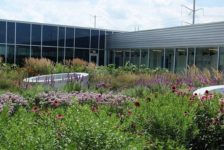
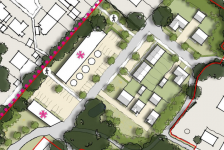
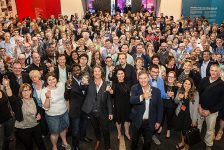
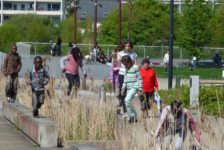
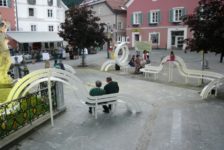
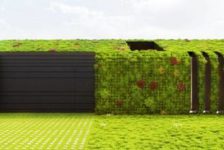
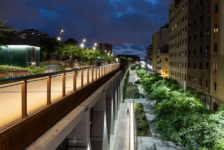

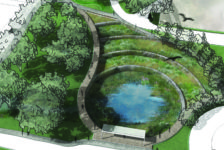
Connie Hoge
1.) Abuse of the plants by the citizens
2.) Lack of trained, educated maintenance
3.) Often the people charged with maintenance don’t care or even like trees
Craig Richmond, RLA
Thank goodness we’re getting away from thinking of street trees and plantings as fillers or afterthoughts. More and more municipalities are designing their streetscapes to accommodate trees and other vegetation. People are starting to really pay attention to just how much mature trees and proper plantings enhance a street scene.
I also believe that we should be more tolerant of trees and shrubs that might be a minor nuisance as long as they provide food or shelter for wildlife in our built environments. A planting plan can be so much more than just a planting plan. Of course there be encounters and destruction by animals, but I think we can figure out a way to make it work.